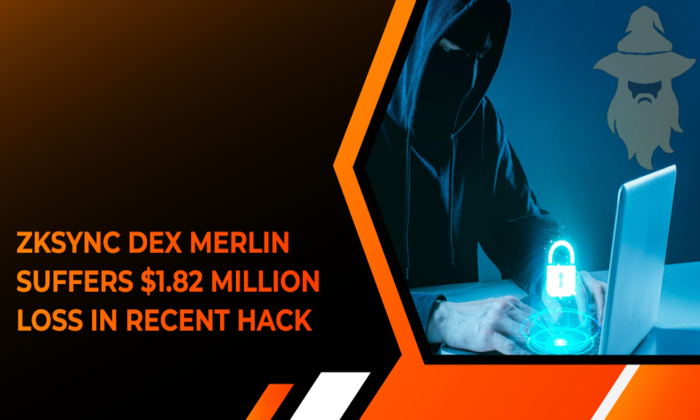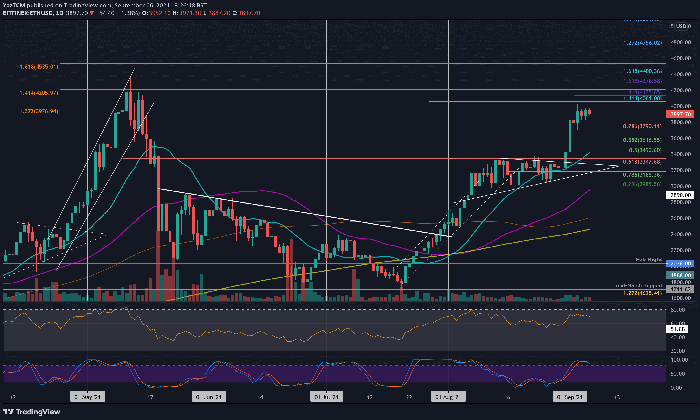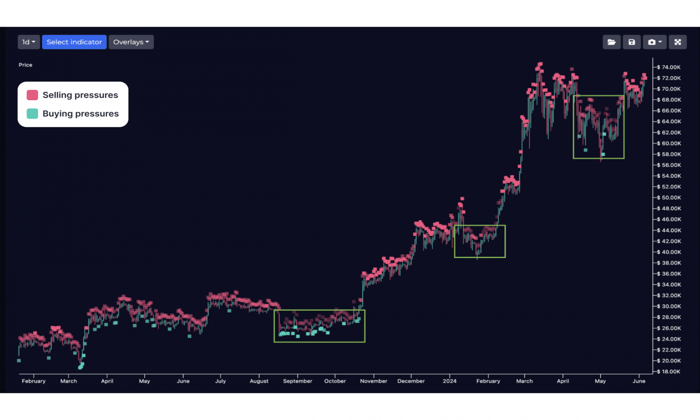The recent ZKsync Hack has sent shockwaves throughout the crypto community, exposing vulnerabilities within the Ethereum Layer-2 scaling network. On April 15, it was revealed that a compromised admin account led to the unauthorized minting of approximately $5 million worth of ZK tokens, which were intended to be part of the ZKsync Airdrop. This incident raises alarming questions about Ethereum security breaches and their impact on user trust in decentralized platforms. Despite the theft, ZKsync has assured users that their funds remain secure, citing that the ZK token contract itself was not compromised. As the dust settles on this crypto theft news, many are left wondering about the implications for future airdrops and the overall safety of digital assets on Layer-2 protocols.
The recent breach involving ZKsync has highlighted significant risks within the realm of Ethereum’s Layer-2 infrastructure. With a staggering $5 million stolen due to a hacked admin account, this incident has raised concerns regarding the integrity of participating platforms and their security measures. The mounting unease comes in the wake of the ZKsync Airdrop, where tokens meant for distribution were exploited, further complicating the landscape for users and investors alike. As the crypto space evolves, incidents like this underscore the importance of robust security practices to safeguard digital currencies. The implications of such hacks extend beyond immediate financial losses, prompting a broader evaluation of how decentralized systems manage vulnerabilities.
The ZKsync Hack Explained
The recent hack of the ZKsync network has sent shockwaves through the crypto community, especially among users of Ethereum Layer-2 solutions. An administrator account was compromised, leading to an unauthorized minting of ZK tokens worth a staggering $5 million. The breach exploited the vulnerabilities in the airdrop distribution contracts, raising concerns about the security of Ethereum-based projects. This incident underscores the critical importance of securing administrative access within blockchain environments, particularly as the market continues to grow.
In the wake of the ZKsync hack, security measures are now under scrutiny. The multiple reports surrounding Ethereum security breaches illustrate that even the most advanced layer-2 solutions are not immune to vulnerabilities. Users remain apprehensive about locking their assets in protocols with such a significant breach of trust. ZKsync’s assurances that funds remain secure may help restore confidence, but the broader implications for Ethereum’s security landscape require a thorough reevaluation of risk management protocols.
Impact of the $5 Million Crypto Theft
The immediate impact of the $5 million theft was felt across the entire ZKsync community, with market sentiment deteriorating and the token’s value plunging. Following the incident, ZK prices sank by 13%, marking an all-time low and shaking investors’ faith in the network’s stability. This fluctuation highlights the fragility of cryptocurrencies and the broad market repercussions that can result from a single exploit. The incident also reinforces the narrative surrounding crypto theft, where news of hacks can lead to panic selling and a loss of investor trust.
As the ZKsync team works to regain user confidence, the drop in the total value locked (TVL) demonstrates just how significant the repercussions are. With TVL witnessing an around 80% decline since earlier in the year, many users are left contemplating the reliability of Ethereum Layer-2 solutions. The ongoing challenges in the crypto ecosystem showcase the need for continuous innovation in security measures to prevent future incidents.
ZKsync Airdrop and Its Consequences
The recent ZKsync airdrop was intended to distribute a significant portion of the platform’s tokens, potentially benefiting users and enhancing liquidity on the network. However, the hack complicates this initiative, as the unclaimed tokens which were supposed to enrich the community were misappropriated. The diversion of such a large quantity of tokens raises concerns about the integrity of future airdrops and how they are administered. Users now face uncertainty regarding future distributions, potentially leading to decreased participation in airdrop events.
Furthermore, the ZKsync team is under pressure to clarify the mechanisms that allowed for the theft of airdrop tokens. Questions about the transparency of token distribution and the safeguards in place to protect user funds are critical at this juncture. This incident may prompt a reevaluation of the airdrop process across decentralized platforms, as other projects might face similar risks if they do not prioritize robust security measures.
Reactions from the ZKsync Team
The ZKsync team’s response to the hack has been proactive but cautious. They immediately reassured users of the security of their individual accounts and emphasized that the breach was isolated to the airdrop distribution contracts. By addressing the situation transparently, the team aims to maintain trust with the community amidst the chaos. Co-founder Alex Gluchowski’s public statements highlight the team’s commitment to resolving the issue, although it will take time to restore full confidence.
Additionally, the recognition of criminal liability for the attacker signifies the severity of the incident and the legal repercussions involved. The ZKsync team’s ongoing investigation aims not only to recover the stolen funds but also to strengthen security protocols moving forward. The need for a robust legal framework is paramount in an industry where decentralized protocols often lack clear accountability, making this a critical point of focus for ZKsync and the broader ecosystem.
Future Security Measures for Ethereum Layer-2 Projects
The ZKsync hack serves as a stark reminder of the vulnerabilities inherent in Ethereum Layer-2 projects. As these networks become more popular, the necessity for stringent security measures becomes even more crucial. Developers are now compelled to enhance security protocols and conduct thorough audits before launching new functionalities. This might include multi-signature wallets or the implementation of advanced cryptographic measures to mitigate the risk of unauthorized access.
Furthermore, the growing trend of decentralized finance (DeFi) platforms adopting best practices from traditional financial systems is becoming essential. Lessons learned from the ZKsync breach could motivate other Ethereum Layer-2 solutions to invest in security infrastructure and user education. Addressing vulnerabilities proactively will be key to safeguarding user funds and maintaining the integrity of the entire blockchain ecosystem.
Market Reactions and Price Recovery
Following the breach, the crypto market witnessed immediate panic, leading to a substantial price decline for ZK tokens. However, the swift recovery of the token price—trading at $0.0472 soon after hitting an all-time low—demonstrates a resilient community willing to see the potential for recovery. This volatility reflects not only the immediate impact of the hack on market confidence but also the ability of crypto markets to rebound from unsettling events.
The fluctuations in ZK token pricing following the hack signify the intricate relationships between news events and market sentiment in the crypto space. As investors digest the implications of the ZKsync hack, the lessons learned may foster a more cautious approach in future investment decisions. Being vigilant and informed is crucial in ensuring that investors are protected from the next wave of crypto theft news that could emerge from similar vulnerabilities.
The Role of Community Trust in Crypto
Community trust plays a vital role in the success of any cryptocurrency project, and the ZKsync hack is a significant test of that trust. As users question the security measures in place, their faith in the project may falter if the team fails to effectively communicate and address concerns. The repercussions of losing community support can be detrimental, as seen in the sharp declines in token value, thereby emphasizing the need for proactive and transparent communication.
Trust must be built and maintained through consistent engagement and assurance of users’ safety. ZKsync’s efforts to keep its community informed, alongside implementing upgrades to their security protocols, will be crucial in regaining confidence. Continuous communication regarding their findings and steps taken post-hack will be vital in restoring faith and ensuring long-term viability in the competitive landscape of Ethereum Layer-2 solutions.
Legal Implications of the Hack
The legal ramifications of the ZKsync hack are unfolding as investigations proceed to identify the perpetrator and recover stolen assets. As blockchain technology intersects with traditional legal frameworks, the challenge remains in navigating how laws apply to decentralized networks like Ethereum. Criminal liability for hackers is becoming a focal point, stressing the necessity for effective law enforcement partnerships to tackle cybercrime in the cryptocurrency space.
Additionally, the outcome of this case could set a precedent for future cybersecurity regulations within the crypto industry. How ZKsync and other platforms respond to these challenges will undoubtedly shape the landscape for compliance and security in decentralized finance. Being proactive may not only prevent future breaches but also fortify the legal standing of projects involved in blockchain technology.
Looking Ahead: The Future of ZKsync and Ethereum Layer-2
As the ZKsync team works to recover from the hack, the focus will undoubtedly shift toward long-term strategies to ensure stability and growth. This incident has highlighted the need for enhanced security protocols and the necessity to attract investor confidence. By refining their operational frameworks and adopting rigorous security measures, ZKsync can regain its standing as a reliable Ethereum Layer-2 solution, potentially averting similar incidents in the future.
The future also hinges on the continued evolution of Ethereum and its Layer-2 solutions. As the demand for scalability and efficiency grows, so too does the need for robust security measures to protect users and their assets. ZKsync’s journey post-hack could inspire other projects to prioritize safety without compromising on innovation. With the right strategies in place, ZKsync can emerge stronger and more resilient in the rapidly evolving landscape of decentralized finance.
Frequently Asked Questions
What happened in the ZKsync Hack incident?
The ZKsync Hack occurred when an administrator account for the Ethereum Layer-2 network ZKsync was compromised, leading to the minting of approximately 111 million unclaimed ZK tokens from the airdrop contracts. This resulted in a loss of $5 million.
How secure is my ZKsync account after the hack?
Despite the ZKsync Hack involving a compromised admin account, the ZKsync protocol and the ZK token contract remained secure. The team has reassured users that their individual funds are safe and have not been at risk.
What impact did the ZKsync Hack have on ZK token prices?
Following the ZKsync Hack, the price of the ZK token dropped by 13% to an all-time low of $0.0415, before recovering to $0.0472. Despite this recovery, ZK remains significantly below its peak levels, having fallen 83% from prior highs.
Are the unclaimed ZK tokens from the airdrop still at risk after the hack?
No, the unclaimed ZK tokens from the airdrop are not at risk following the ZKsync Hack. The incident was contained to the airdrop distribution contracts, and all potential funds that could be minted have already been minted.
What measures is ZKsync taking following the hack?
In response to the ZKsync Hack, the team is investigating the incident, including why the unminted supply was not returned to the Token Assembly as intended. The ZKsync team has confirmed that no further exploits using this method are possible.
How did the ZKsync Hack affect the crypto theft news landscape?
The ZKsync Hack contributed to the ongoing discussion in crypto theft news by highlighting vulnerabilities in smart contracts and the importance of administrator account security. It serves as a cautionary tale for other blockchain networks.
What legal actions are being pursued after the ZKsync Hack?
The attacker involved in the ZKsync Hack is facing potential criminal liability. The co-founder of ZKsync, Alex Gluchowski, indicated that it is in the hacker’s best interest to expedite the return of the stolen funds.
Will ZKsync continue its airdrop program after the hack?
Yes, ZKsync plans to continue its airdrop program despite the hack incident. The platform had begun airdropping 17.5% of its total token supply prior to the breach.
| Key Point | Details |
|---|---|
| Compromise of Admin Account | The ZKsync administrator account was hacked, leading to the theft of $5 million in unclaimed tokens. |
| Amount Stolen | The attacker minted approximately 111 million ZK tokens, inflating the token supply by about 0.45%. |
| Team’s Assurance | ZKsync confirmed that user funds are secure and that the hack was limited to the airdrop contracts. |
| Criminal Liability | The hacker faces criminal charges, adding pressure to return the funds. |
| Market Impact | ZK token price dropped 13% initially, reaching an all-time low of $0.0415 but rebounded to $0.0472. |
| Total Locked Value | Total value locked in ZKsync has dropped nearly 80% to just over $60 million. |
Summary
ZKsync Hack has shocked the Ethereum Layer-2 scaling community with a significant security breach resulting in a loss of $5 million. Despite the unfortunate incident, ZKsync has reassured users that their funds remain safe, and the issue was contained to a hacked admin account related to airdrop contracts. The swift action taken by the team highlights their commitment to maintaining the integrity of the platform while addressing the ongoing impacts on token supply and value. As investigations continue, confidence in ZKsync’s security measures will be crucial for its future growth.
The recent ZKsync hack has sent shockwaves through the crypto community, revealing vulnerabilities even within Ethereum Layer-2 solutions. On April 15, a compromised administrator account led to a staggering loss of $5 million in ZK tokens, primarily unclaimed coins from the ZKsync airdrop. While the Ethereum security breach raised concerns, the ZKsync team quickly reassured users that their funds remained secure and unaffected. This security incident, attributed to a breached key, spotlighted the ongoing challenges faced by platforms handling virtual assets. As crypto theft news unfolds, the focus shifts to safeguarding token contracts and reinforcing trust among users.
In a shocking development, the Ethereum Layer-2 platform ZKsync faced a significant security incident that has drawn attention to the risks associated with airdrops and token management. The breach involved the unauthorized access of an admin account, resulting in the misappropriation of millions in airdropped ZK tokens. This unfortunate event highlights the critical importance of robust security protocols in the rapidly evolving world of cryptocurrency. As discussions around the implications of this incident circulate, the ZKsync team emphasizes their commitment to user safety while investigating the breach’s causes. Overall, the event serves as a reminder of the potential threats within the decentralized finance landscape.















